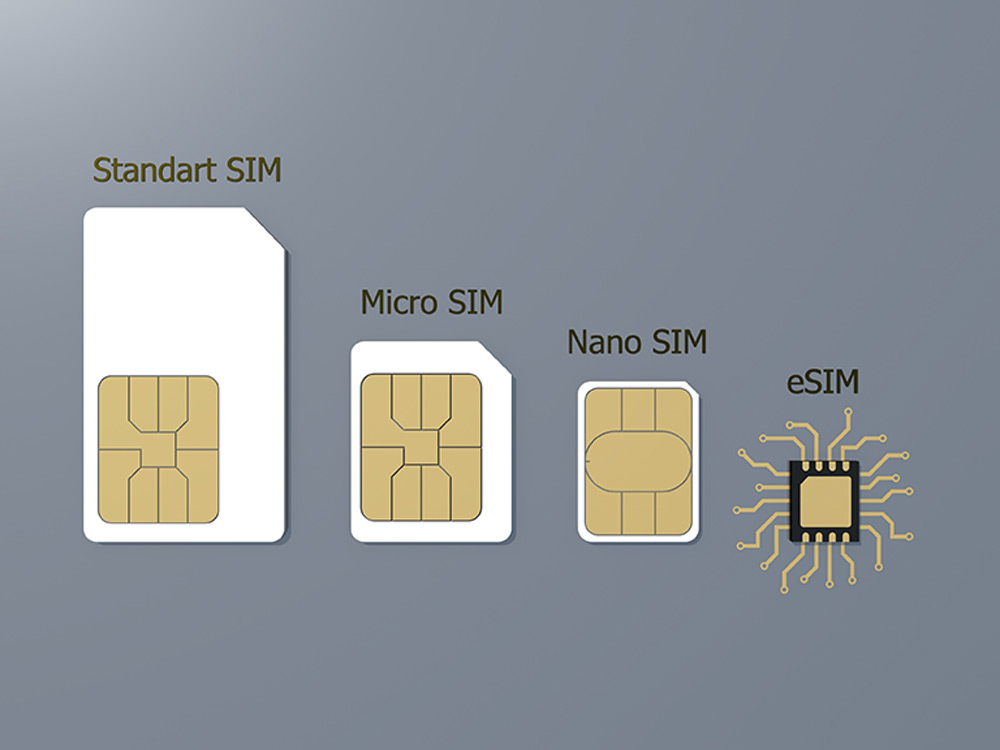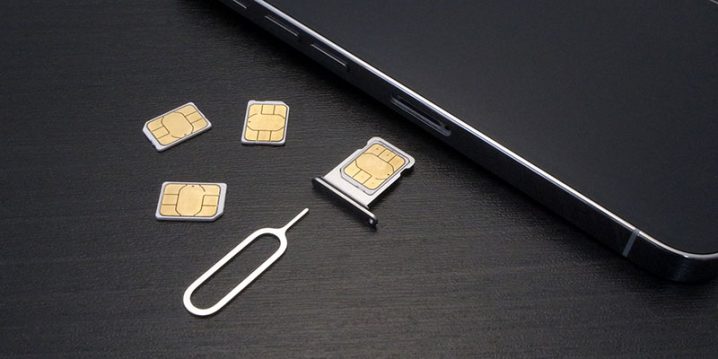Table of Contents
Nowadays, many businesses choose an eSIM over a traditional SIM card because it is more advanced. Everyone is aware that a SIM card must be inserted into a mobile device in order to use wireless service. A tiny, portable chip known as a SIM, or subscriber identity module, is used to identify a cell phone to a mobile phone network. Nowadays, people are interested in learning the differences between an eSIM and a physical SIM.
A physical SIM card and an eSIM are fundamentally different from one another in that a physical SIM card may be removed from one phone and inserted into another, whereas an eSIM is “embedded” in the phone and cannot be ejected. You may be thinking, “So they pretty much do the same thing,” given that you already know what a SIM card is and how it functions in your existing phone. There are still some significant variations between the eSIM and the traditional SIM card you’re used to, even though they might not be the greatest deal. Let’s look at the differences between an eSiM and a physical SIM in more depth.
What is a SIM?
A subscriber Identity Module, or SIM, is a tiny chip the size of a thumbnail that is inserted into your cell phone and stores special data necessary to connect a mobile phone to a particular mobile network. An actual card that you insert into your phone is a SIM card. The Mini-SIM, Micro-SIM, and lastly, Nano-SIM, which is currently the industry standard for these physical chips, were all developed in 1991.
Usually, they slide into a tray that extends from the side of your phone. The portability of a SIM card is by far its greatest advantage. You won’t need to call your carrier to swap between devices; you can do it in a matter of seconds. The issue is that the tray takes up more room within the smartphone than it should. Well, the SIM card is the reason for everything you do on your phone. Everything is possible with it, including connecting to 3G, 4G, and 5G internet services and sending texts, and making phone calls.
What is an eSIM?
eSIM stands for embedded SIM. The eSIM is much smaller and serves as an alternative to—or replacement for—the conventional SIM card that is used to connect phones to mobile networks. The primary distinction between an eSIM and a physical SIM is that an eSIM is permanently attached to the motherboard of the phone (or another device), in contrast to a standard SIM card. It is not required to be inserted, and it cannot be taken out. However, since the data on the eSIM is rewriteable, switching carriers or changing phone numbers is still possible.
It can even be simpler to switch or set it up than you think. It could all happen instantaneously with just a fast phone call; you wouldn’t need to wait for a new SIM to be delivered to your home or fiddle around with a SIM ejector tool. The same technology and GSM networks that are used by regular SIM cards are also used by eSIM cards.
E SIM Vs Physical SIM: Detailed Analysis

Physicality
An eSIM, which is an electronic version of the classic SIM card, is integrated directly into the motherboard of the device from the manufacturing process, in contrast to a traditional SIM, which fits into the SIM tray within your phone. It is permanently surface affixed to the mobile device out of the box without the need for a physical card. It functions much in the same way as a physical SIM card but without requiring that it be inserted into the slot.
SIM Profile
If you find yourself in a location with poor coverage, you can quickly switch between providers owing to an eSIM’s capacity to store up to five virtual SIM cards. An eSIM can carry numerous profiles for the consumer, which is a significant advantage over a traditional physical SIM card that can only hold one profile per customer. On your smartphone, an eSIM is merely a reprogrammable logical profile. Additionally, an eSIM enables you to control your SIM profile on other gadgets like computers, smart watches, automobiles, and so on. You can set up the same eSIM profile to function on various devices.
Network Switching
An eSIM, in contrast to a traditional SIM card, does not need a physical card and can be connected to many network providers. It essentially breaks the existing link between the customer and the network provider, making it simpler to transfer carriers on the same phone. Your coverage is purchased through mobile networks, and an eSIM is embedded into the phone itself via software.
Form Factor
The form factors of SIM cards are used by subscriber identity modules to categorize the cards as 1FF, 2FF, 3FF, 4FF, and MF2 cards. The SIM card gets smaller and smaller with each generation. Mini SIMs are referred to as 2FF, micro SIMs as 3FF, and nano SIMs as 4FF. Physical SIM cards fall under the next form factor, then. The eSIM is an embedded SIM that falls within the MF2, or machine-to-machine form factor, classification.
What Are the Benefits of eSIM?
- eSIM allows us to start a new account in minutes
When you buy a Mobile plan for your unlocked, eSIM-capable phone, you may immediately begin using your plan without having to wait for a physical SIM card to be delivered to you.
- eSIM is greener too
Less waste means there are no plastic cards or delivery materials. If it wasn’t obvious when we demonstrated how to recycle your old phone, we are huge supporters of environmental causes in addition to all the money we help you save.
- eSIM takes up less space
Some more recent phones lack the space for a real SIM card because they are eSIM-only devices. As a result, the phone has more room inside for a larger, longer-lasting battery, a quicker processor, or additional memory.
READ MORE: How To Listen To Music Without Damaging Your Ears?
eSIM can help you find your phone easier
We’re sure everyone has seen a movie or TV show where the villain takes out the SIM card before destroying the cell phone to stall the good people for a short while. Of course, thieves will also use stolen phones for this. The phone’s link to a network tower is broken when the physical SIM card is removed, making it very challenging to determine the location of the phone. However, since the thief won’t be able to remove the SIM card, it will be much simpler to locate if your phone is taken while linked to the network using eSIM.
eSIM is exceptionally secure
Your eSIM is permanently integrated into your phone, making it more difficult to steal and use in another person’s phone or to copy. Due to extra built-in security mechanisms, they are also very hard to hack.
What are the Downsides to an eSIM?
An eSIM’s primary drawback is that switching phones requires more effort. The SIM card cannot just be taken out of one device and put into another. Additionally, it is more challenging to check for equipment issues. Currently, a quick test to determine whether a connection or signal issue is with your device or network is to insert your SIM card into a different phone. That is not possible with an eSIM. Additionally, it takes time for new technology to enter the mainstream. Although there is still a lack of eSIM availability and support, this is set to change with the assistance of Apple, Samsung, and Google.
Do A Phone Support Both An eSIM And A Physical SIM Card At The Same Time?
Perhaps, yes. You can probably have at least two different lines on a single phone if it supports both eSIM and traditional SIM cards. At least because some eSIM-compatible phones can allow up to five different lines on a single eSIM. Everyone can benefit from this feature:
- Anyone who doesn’t want to carry around two phones yet wants a personal line and a business number.
- Anyone who requires a local number yet is unwilling to give up their long-held hometown number.
- Anyone who uses an unlocked phone while traveling abroad and occasionally uses a local SIM card to avoid roaming fees There is less possibility of losing your current SIM card if you don’t have to remove it to insert a temporary one.
- Anyone looking to switch their mobile provider temporarily while keeping their existing one operational.
Do You need to switch to eSIM?
Now? No, not yet. Even while physical SIM cards will still be used in cellular devices, eSIM is set to overtake them as the new standard. If your current phone doesn’t already support it, your next phone update probably will. Therefore, the more you are aware of eSIM now, the more equipped you will be when we all transition.
What Devices Use eSIM?

Both an eSIM and a nano-SIM are used by the iPhone 12 and iPhone 13 series, as well as the older iPhone 11, XS, and XR models. Additionally, the tiny iPhone SE supports eSIM. There’s a decent probability that your next upgrade will include it because more Android phones are incorporating the new technology every day. The identical eSIM-nano-SIM configuration has been used in Google Pixel phones since the Pixel 2; this includes the Pixel 5a 5G and Pixel 6. eSIM support is available on a number of Samsung smartphones, including the Galaxy S20, S21, and S22 models, the Fold and Flip, and the Note 20 series. Other gadgets that support eSIM include the cellular variations of the Apple Watch, Samsung Galaxy Watch, and Huawei Watch. Since Windows 10 and Windows 11 both support eSIM, always-connected laptops may start to appear more frequently in the future.
Conclusion
You must physically purchase a plastic SIM card that connects to a network and is only compatible with one device in order to obtain a physical SIM card. An eSIM is a chip that is immediately surface-mounted onto a device and facilitates remote provisioning of credentials. It is not a separate component. Because an eSIM can retain several profiles and the data is rewritable, unlike a standard SIM, you can transfer networks without having to worry about taking out your SIM and replacing it.
READ MORE: TCL Roku TV Won’t Turn On: How To Fix?





